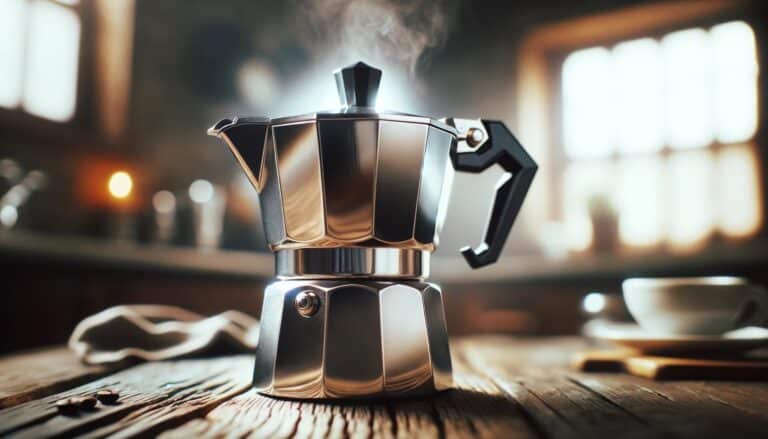Coffee, one of the world’s most beloved beverages, comes in a multitude of varieties, each offering a unique taste and experience. This article dives into the smoothest types of coffee, exploring what makes certain brews stand out in their velvety texture and rich, mellow flavors. Understanding the nuances of coffee smoothness can enhance the coffee-drinking experience, whether you’re a casual drinker or a connoisseur.
The journey to finding the smoothest coffee begins with an exploration of the different coffee varieties. Primarily, there are two species of coffee beans: Arabica and Robusta. Arabica beans are known for their sweeter, more complex flavor and are generally considered superior in quality. Robusta beans, on the other hand, have a stronger, more bitter taste and are often used in espresso blends for their rich crema. The geographic origin of coffee beans also plays a crucial role. Beans from different regions, such as Latin America, Africa, and Asia, exhibit distinct flavor profiles influenced by the local climate, soil, and cultivation methods.
Defining Smoothness in Coffee

Smoothness in coffee is a characteristic that can be somewhat subjective, but it generally refers to a pleasing texture and a balanced, mild flavor profile. Smooth coffees are often described as silky, creamy, or velvety, lacking harsh bitterness or overpowering acidity. The smoothness of coffee is influenced by various factors, including the bean variety, roast level, and brewing method.
Appreciating the smoothness of coffee is not just about taste; it’s also about understanding the art and science behind coffee brewing. For coffee enthusiasts and professionals alike, recognizing the elements that contribute to a coffee’s smoothness can lead to a more informed choice of beans and brewing techniques. This knowledge enables individuals to tailor their coffee experience to their preferences, creating a more enjoyable and satisfying cup every time.
Factors Influencing Coffee Smoothness

Bean Origin and Varietal
- Arabica vs. Robusta: Arabica beans are typically smoother and more flavorful with a diverse range of subtle flavors, often preferred for their lower bitterness compared to Robusta. Robusta, however, has a stronger, harsher taste with a grain-like overtone and peanutty aftertaste.
- Geographic Influence: The origin of the coffee bean greatly affects its flavor profile. Beans from different regions (like Ethiopia, Colombia, or Indonesia) have unique characteristics due to variations in soil, climate, and altitude. For instance, Ethiopian beans are known for their fruity and floral notes, often contributing to a smoother taste.
Roasting Process
- Light vs. Dark Roasts: Light roasts tend to preserve more of the original flavor of the bean, often resulting in a smoother taste with more pronounced acidity. Dark roasts, while sometimes perceived as stronger, can actually have less bitterness and a smoother feel due to the breakdown of complex flavors and acids during the roasting process.
- Roasting Techniques: The method and duration of roasting can influence the smoothness of coffee. Slow-roasting techniques tend to bring out a smoother, more nuanced flavor profile compared to faster, high-temperature roasts.
Brewing Methods
- Drip Coffee: This common method can produce a smooth cup, especially if a medium grind and proper water temperature are used.
- Espresso: Known for its rich and concentrated flavor, espresso can be smooth if properly extracted, avoiding over-extraction which leads to bitterness.
- French Press: This method allows for full immersion brewing, often resulting in a rich, full-bodied, and smooth coffee.
- Cold Brew: Cold brewing tends to extract fewer acids and bitter compounds, generally resulting in a smoother, sweeter cup of coffee.
Grind Size and Consistency
The size and uniformity of coffee grounds play a critical role in extraction. A consistent grind enables even extraction, which is key to achieving a smooth taste. Coarser grinds are typically used for slower brewing methods like the French Press, while finer grinds are suited for espresso.
Water Quality and Temperature
The quality of water used in brewing can significantly affect the taste of coffee. Hard water or water with high mineral content can alter the flavor profile. Additionally, the temperature of the water impacts extraction; typically, water just off the boil (about 195°F to 205°F) is ideal for most brewing methods, extracting flavors efficiently without over-extraction, which can lead to bitterness.
Popular Smooth Coffee Varieties

Colombian Coffee
- Characteristics: Colombian coffee is renowned for its smooth, well-balanced flavor. It often exhibits a mild, fruity acidity, with notes of caramel and nuts.
- Growing Conditions: Grown in the rich volcanic soils of the Colombian Andes, the beans benefit from the perfect combination of altitude, temperature, and humidity.
- Why It’s Smooth: The careful processing and washing of the beans contribute to their clean, consistent flavor, making Colombian coffee a quintessential example of smoothness in coffee.
Ethiopian Yirgacheffe
- Characteristics: Ethiopian Yirgacheffe is famous for its bright acidity and vibrant, floral aromatics. It often features flavors of lemon and berries with a light, silky body.
- Origin: Yirgacheffe is a small region within Ethiopia, the birthplace of coffee. The beans are usually grown at high altitudes, contributing to their unique flavor profile.
- Why It’s Smooth: The combination of altitude, Ethiopian heirloom varietals, and traditional natural processing methods results in a coffee that is both exotic and remarkably smooth.
Brazilian Santos
- Characteristics: Brazilian Santos coffee is typically lower in acidity, with a nutty, chocolatey profile and a smooth, creamy body.
- Growing Regions: Grown predominantly in the regions of Minas Gerais and São Paulo, the beans benefit from the moderate climate and vast, rolling landscapes.
- Why It’s Smooth: The pulped natural and dry processing methods used in Brazil contribute to the smooth, mild flavor of Santos coffee, making it a popular choice for espresso blends.
Sumatra Mandheling
- Characteristics: Sumatra Mandheling is known for its full body, low acidity, and rich, earthy flavor with hints of chocolate and tropical spices.
- Growing Conditions: Grown in the tropical rainforests of Sumatra, the unique climate and rich volcanic soil contribute significantly to the coffee’s distinct characteristics.
- Why It’s Smooth: The traditional wet-hulling process, known as Giling Basah, results in a uniquely smooth, heavy-bodied coffee. This process, combined with the low-acid nature of the beans, creates a deeply flavorful and smooth cup.
The Role of Acidity and Body in Smoothness

Understanding Acidity Levels
- Definition and Perception of Acidity: In coffee, acidity is often misconstrued as sourness, but it actually refers to the bright, tangy quality that gives coffee its liveliness. It’s akin to the acidity in fruit, contributing to the overall flavor profile.
- Influence on Smoothness: The level and type of acidity can greatly affect the perceived smoothness of coffee. A balanced acidity can enhance smoothness, adding a clean, crisp character without overwhelming bitterness or sourness.
- Types of Acidity: Different beans have varying types of acidity, such as citric, malic, or phosphoric. Each type contributes differently to the coffee’s flavor and perceived smoothness.
- Impact of Origin and Processing: Coffee origin and processing methods significantly influence acidity levels. For example, African coffees often have a higher, more pronounced acidity compared to Indonesian coffees, which tend to be lower in acidity.
The Impact of Body on Texture and Mouthfeel
- Definition of Body in Coffee: Body refers to the physical mouthfeel of coffee, the weight or thickness of the brew on the palate. It ranges from light and tea-like to heavy and creamy.
- Body’s Contribution to Smoothness: A coffee with a full or medium body often feels smoother due to its richness and the way it coats the palate. In contrast, a light-bodied coffee might be perceived as less smooth due to its thinner texture.
- Factors Influencing Body: The body is influenced by the coffee’s origin, varietal, roast level, and brewing method. For example, espresso typically has a fuller body compared to a pour-over, contributing to a smoother experience.
- Balancing Acidity and Body: The key to achieving smooth coffee lies in balancing acidity and body. A coffee with well-balanced acidity and a substantial body is often perceived as smoother. This harmony creates a pleasant, satisfying sensory experience, where neither the acidity nor the heaviness overwhelms the other.
Tips for Brewing Smooth Coffee at Home

Choosing the Right Beans
- Select Beans Based on Preference: Opt for Arabica beans for a smoother, more nuanced flavor. Consider the origin and flavor profile, choosing beans with characteristics that align with your preference for smoothness.
- Freshness Matters: Freshly roasted beans are crucial for a smooth and flavorful cup. Look for beans that have been roasted within the past two weeks.
- Consider Roast Level: Light to medium roasts often preserve the bean’s inherent flavors, contributing to a smoother taste, while some dark roasts can also be smooth if they are well-balanced.
Perfecting the Grind
- Grind Size: Choose the appropriate grind size for your brewing method. A finer grind is ideal for espresso, while a coarser grind works better for French press and cold brew.
- Consistency is Key: A consistent grind size ensures even extraction, which is essential for a smooth taste. Invest in a good quality burr grinder for uniform grounds.
Optimal Brewing Techniques
- Brewing Method: Experiment with different brewing methods to find what yields the smoothest cup for you. Methods like French press, pour-over, and cold brew are known for producing smooth coffee.
- Extraction Time: Pay attention to the brewing time. Over-extraction can lead to bitterness, while under-extraction might result in a weak, sour cup.
- Ratio of Coffee to Water: Use the right coffee-to-water ratio. A general guideline is 1 to 2 tablespoons of coffee for every 6 ounces of water, but this can vary based on the method and personal taste.
Adjusting Water Temperature and Quality
- Temperature Matters: The ideal water temperature for brewing coffee is between 195°F to 205°F. Temperatures outside this range can lead to over or under-extraction.
- Quality of Water: Use clean, filtered water. Hard water can make coffee taste bitter, while soft water can make it taste flat. Balanced mineral content in water can significantly enhance the smoothness of the coffee.
Conclusion
The pursuit of the smoothest coffee is influenced by a myriad of factors. Bean origin and varietal play a significant role; Arabica beans and beans from regions like Colombia and Ethiopia are often associated with smoothness. The roasting process is also pivotal, where both the roast level and technique can impact the flavor profile and perceived smoothness. The brewing method, from drip coffee to cold brew, affects the extraction of flavors and thus the smoothness. Additionally, the grind size and consistency, along with the water quality and temperature used in brewing, are critical for achieving a smooth cup.
Coffee enjoyment is deeply personal and subjective. What one person finds smooth, another might perceive differently. Therefore, it’s essential for individuals to experiment with different beans, roasts, and brewing methods to discover what smoothness means to them. Adjusting variables like grind size, water temperature, and brewing time can lead to a more tailored and satisfying coffee experience.
The world of coffee is vast and diverse. Encouraging coffee enthusiasts to explore a variety of beans and brewing methods can lead to exciting discoveries and a deeper appreciation for the nuances of coffee. Trying different smooth coffee varieties like Colombian, Ethiopian Yirgacheffe, Brazilian Santos, or Sumatra Mandheling can broaden the palate and enhance understanding of what contributes to the smoothness of coffee. Ultimately, the journey to finding the perfect smooth cup of coffee is a rewarding and enriching experience that combines science, art, and a bit of personal adventure.
Frequently Asked Questions
1. What makes coffee “smooth” compared to other flavor profiles?
- Smoothness in coffee is characterized by a harmonious balance of flavors without overpowering bitterness or acidity. It typically refers to a silky, creamy texture and a mild, pleasant taste that is easy on the palate.
2. Can the water I use at home affect the smoothness of my coffee?
- Yes, the quality of water greatly influences the taste of your coffee. Hard water can make your coffee taste bitter, while soft water might leave it tasting flat. Using filtered or bottled water with a balanced mineral content can enhance the smoothness of your brew.
3. Is it true that light roast coffee is smoother than dark roast?
- Light roast coffee can be perceived as smoother by some due to its lower bitterness and higher acidity, which often results in a more nuanced flavor profile. However, some dark roasts can also be smooth if they are well-balanced and roasted to highlight the bean’s natural sweetness.
4. How does the grind size affect the smoothness of coffee?
- The grind size affects the surface area exposed to water, thereby influencing extraction. A consistent, appropriate grind size for your brewing method ensures even extraction, which is crucial for achieving a smooth taste. A grind that is too fine or too coarse can lead to over-extraction (bitterness) or under-extraction (sourness), respectively.
5. Are certain coffee origins known for producing smoother coffee?
- Yes, certain coffee origins are renowned for their smoother profiles. For example, Colombian and Brazilian coffees are often appreciated for their balanced and mild flavors, while Ethiopian Yirgacheffe is known for its smooth, floral notes. The specific growing conditions and bean varietals of these regions contribute to these characteristics.






